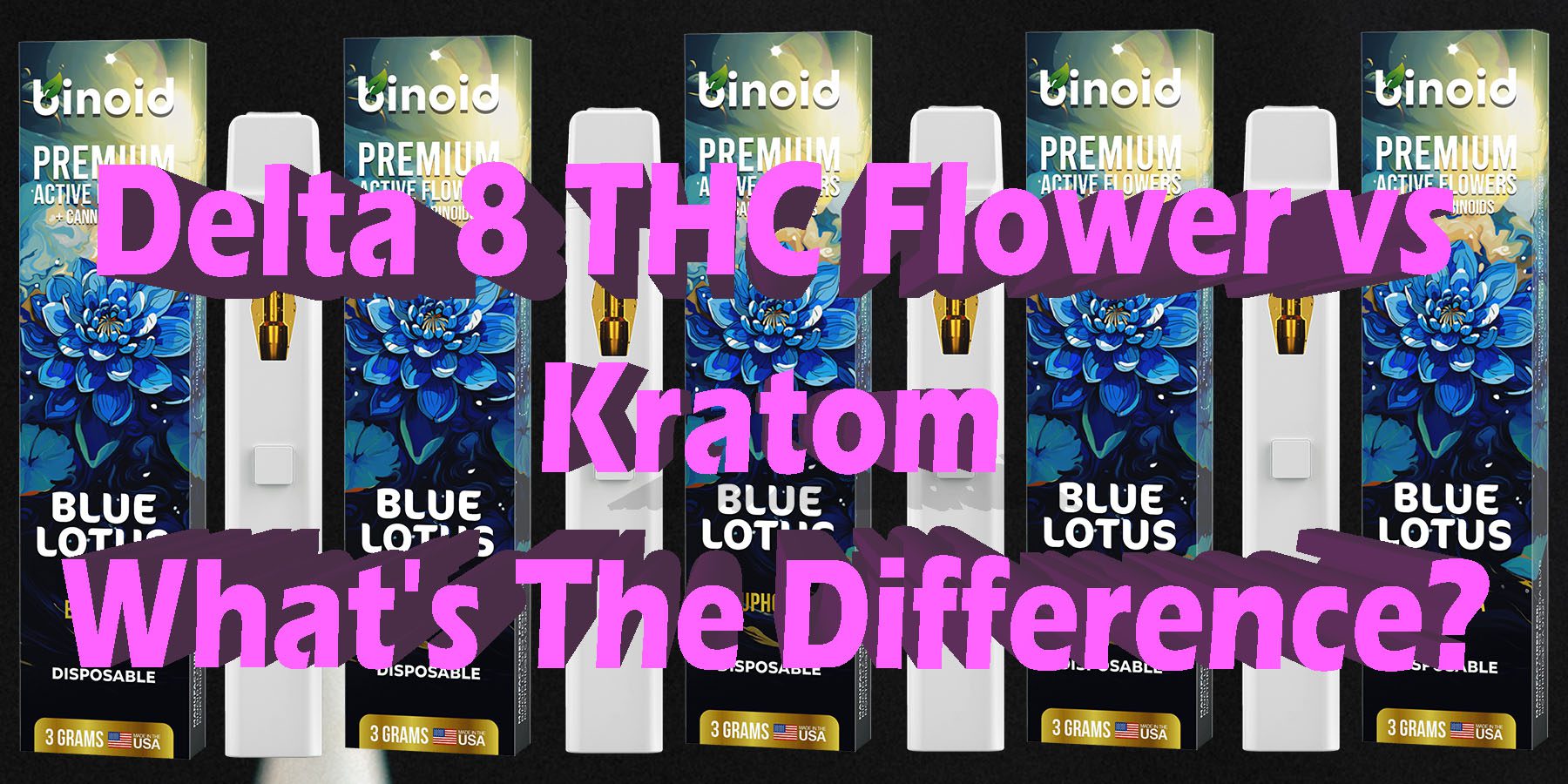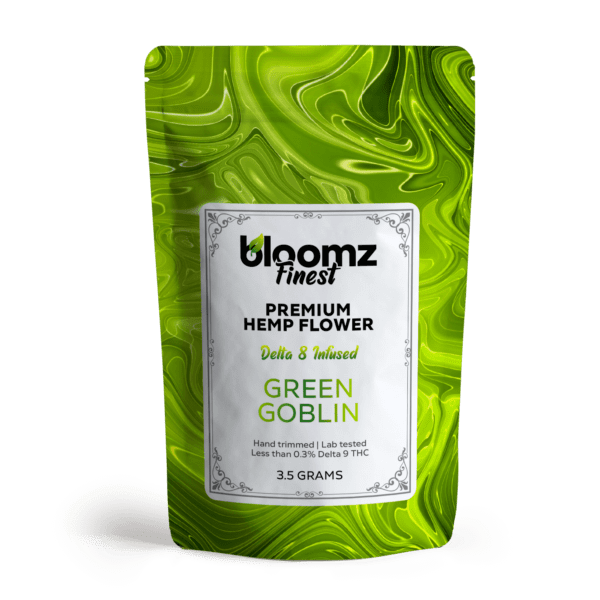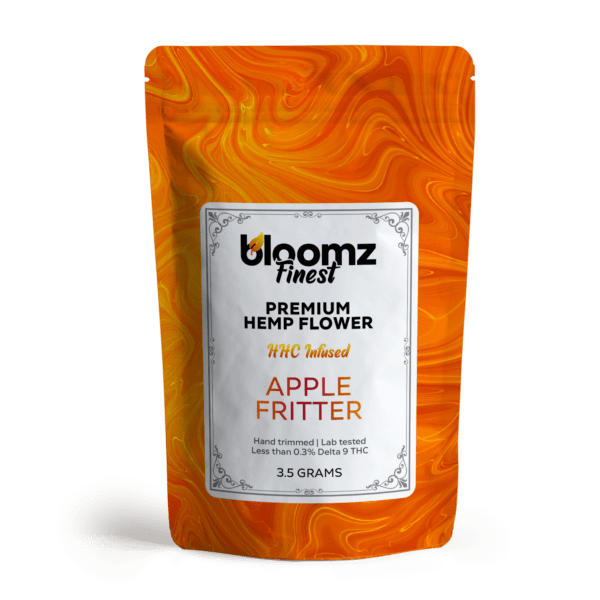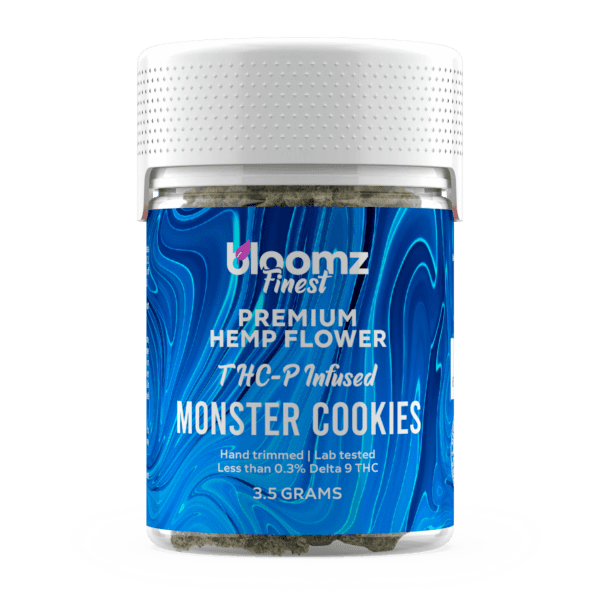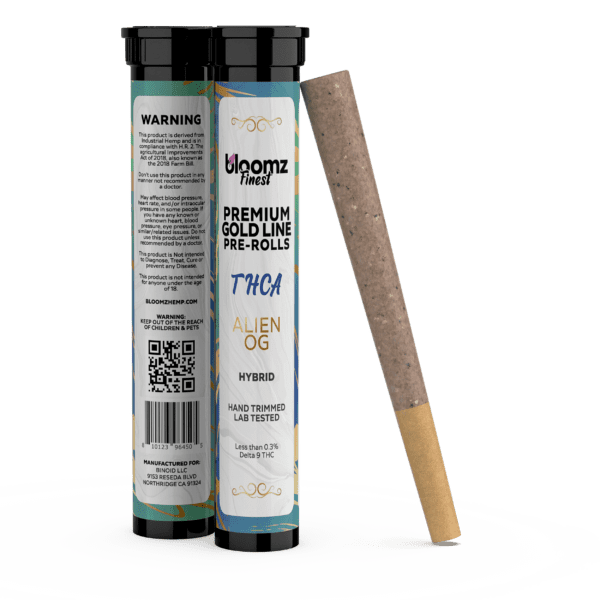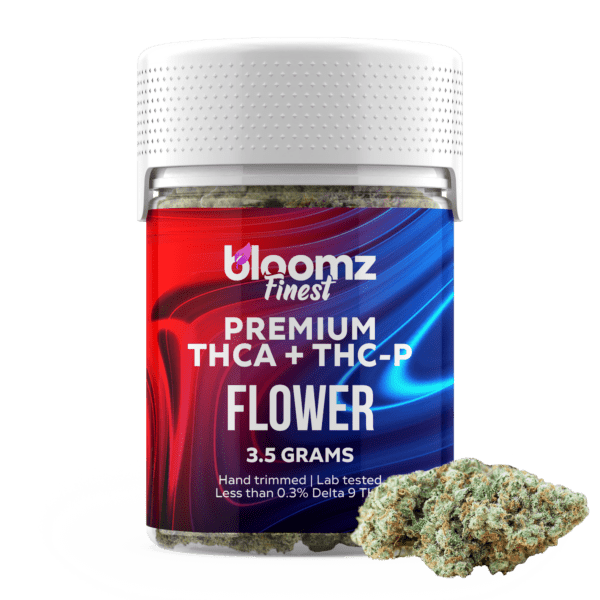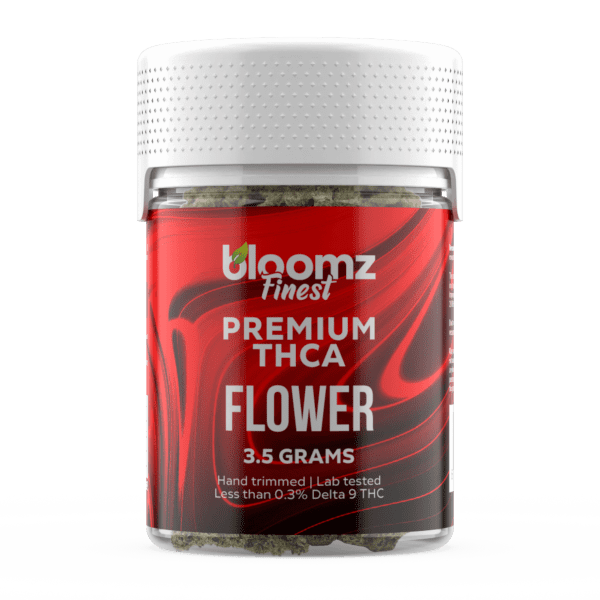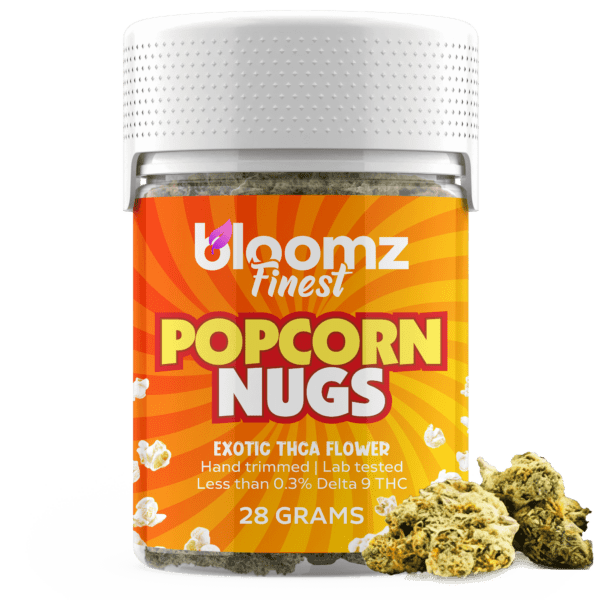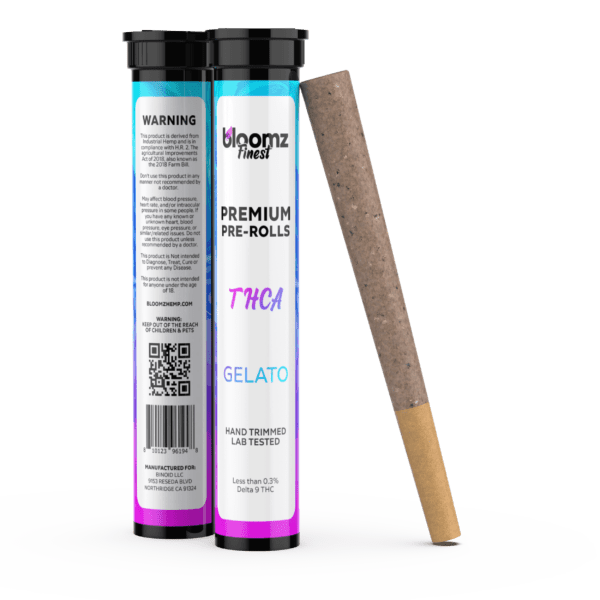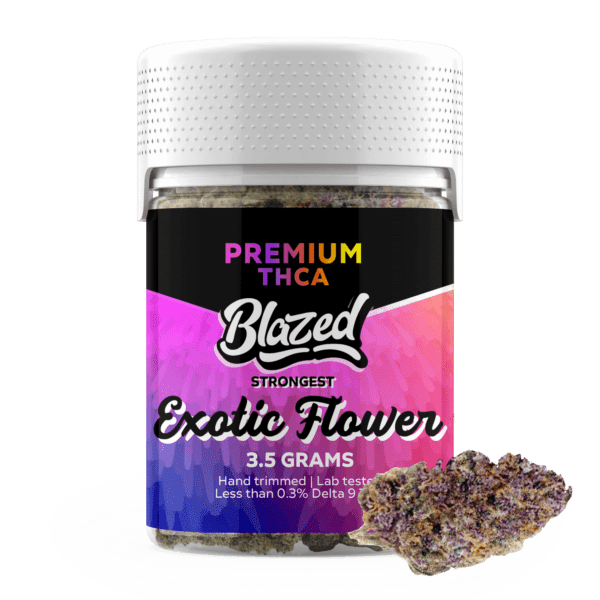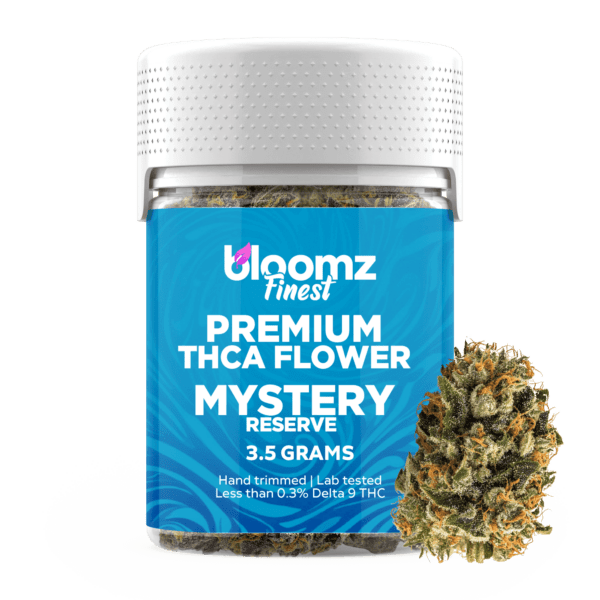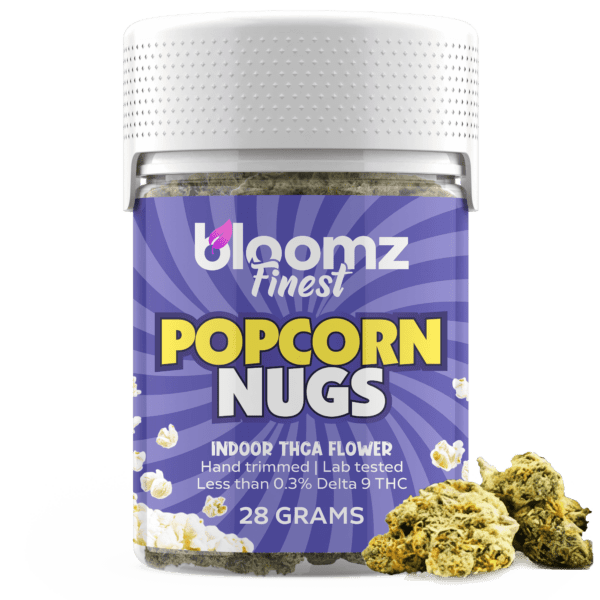In the vast and ever-evolving marketplace of natural and hemp-derived botanicals, consumers are greeted with an unprecedented array of choices, each offering a unique pathway to novel experiences. Two titans have emerged in this landscape, capturing widespread attention for their distinctive effects and complex legal statuses: Delta 8 THC flower and Kratom. One is a product of modern cannabis science, a clever innovation that harnesses the potential of the hemp plant to create a familiar yet gentler form of euphoria. The other is an ancient botanical treasure from the tropical jungles of Southeast Asia, a leaf revered for centuries for its remarkable versatility.
This is a matchup between a laboratory-refined cannabinoid and a time-honored traditional herb, a fascinating juxtaposition of human ingenuity and raw, unaltered nature. Their stories, effects, and very essences are worlds apart, inviting a deeper exploration into what truly defines each of these popular contenders.
TO BUY DELTA 8 THC FLOWER CLICK HERE
Recommended products
Why It’s Important to Breakdown the Matchup of Delta 8 THC Flower vs. Kratom
Navigating the choices in today’s botanical market requires a clear and informed perspective, and the comparison between Delta 8 THC Flower and Kratom is particularly vital. These two products, while both offering avenues to relaxation and altered states, are fundamentally different in their origin, chemical nature, and the experiences they provide. A detailed breakdown is not merely helpful—it is essential for anyone looking to make a responsible decision that aligns with their personal preferences, risk tolerance, and local regulations. To choose between them without understanding their core distinctions would be like choosing between a sailboat and a submarine for a journey; both travel on water, but the experience, mechanism, and destination are profoundly different.
In fact, a comprehensive analysis is critical due to the following:
-
Understanding Product Origins: This is perhaps the most crucial distinction. “Delta 8 THC flower” is a manufactured product where a naturally grown hemp flower is infused with a cannabinoid that has been chemically converted from another (CBD). Kratom, in its most common form, is simply the dried and ground leaf of the Mitragyna speciosa tree. Understanding this difference—an infused, semi-synthetic product versus a raw, natural botanical—is foundational to understanding potential differences in safety, purity, and authenticity.
-
Clarifying the User Experience: While both can be used for relaxation, the nature of that relaxation is vastly different. Delta 8 THC is unequivocally psychoactive, producing a mild but distinct “high” characterized by euphoria and altered perception. Kratom’s effects are famously dose-dependent, capable of being stimulating like coffee at low doses and deeply sedating at high doses, but it does not produce the same kind of psychoactive experience as a cannabinoid. Matching the product to the desired mental and physical state is paramount.
-
Navigating Complex Legalities: Both Delta 8 THC and Kratom exist in a state of legal ambiguity in the United States. Delta 8’s legality hinges on a contested interpretation of the 2018 Farm Bill, and it has been explicitly banned by many states. Kratom is federally legal but is unregulated and has been banned by several states and municipalities. A clear, side-by-side look at their respective legal challenges helps consumers understand the specific risks and regulations in their area.
-
Highlighting Safety and Regulation Concerns: The lack of federal oversight for both products places a significant burden on the consumer to verify quality and purity. For Delta 8, this involves concerns about potential unknown byproducts from the chemical conversion process. For Kratom, it involves risks of contamination with heavy metals or bacteria. Breaking down these safety considerations underscores the absolute necessity of sourcing products only from highly reputable vendors who provide comprehensive, third-party lab testing.
Contender #1: Delta 8 THC Flower
Our first contender, Delta 8 THC flower, is a true product of the modern hemp revolution. It burst onto the scene following the passage of the 2018 Farm Bill, quickly becoming one of the most talked-about and sought-after products in the cannabinoid market. It represents a fascinating intersection of agriculture, chemistry, and consumer demand, offering a novel experience that sits in a unique space between non-intoxicating CBD and the more potent Delta 9 THC found in traditional marijuana.
Delta 8 THC flower is not something you can find growing in a field; it is a testament to human ingenuity, a carefully crafted product designed to deliver a specific, sought-after effect. Its rise to prominence has been both meteoric and controversial, making it a compelling and complex figure in the world of botanicals.
Delta 8-tetrahydrocannabinol (Delta 8 THC) is a naturally occurring cannabinoid found in the cannabis plant, but it only appears in minuscule, often untraceable concentrations. It is an isomer of the more famous Delta 9 THC, meaning they share the same chemical formula (C21H30O2) but have a different atomic structure. This slight difference—the location of a double bond in their carbon chain—has a significant impact on how the molecule interacts with the body’s endocannabinoid system (ECS), specifically the CB1 receptors in the brain.
This structural variance is why Delta 8 THC is reported to be significantly less potent than Delta 9 THC, producing a milder and more clear-headed psychoactive effect. Because it’s not feasible to extract natural Delta 8 THC in commercial quantities, the vast majority of Delta 8 THC on the market is created in a laboratory through a chemical process called isomerization, where hemp-derived CBD is converted into Delta 8 THC distillate.
Recommended products
This leads to a crucial and often misunderstood point: “Delta 8 THC flower” does not naturally exist; it is a manufactured product. The process begins with a high-quality, legally compliant hemp flower, which is rich in CBD or CBG but contains less than 0.3% Delta 9 THC. This hemp flower serves as the base or chassis for the final product. The psychoactive component, Delta 8 THC, is then added to this base flower in the form of a thick, sticky oil known as distillate. The result is a product that looks, smells, and can be consumed just like traditional cannabis flower, but its effects are derived from the infused cannabinoid. The multi-step production process of Delta 8 THC flower is a blend of agriculture and chemistry, specifically:
-
Hemp Flower Cultivation: First, cultivators grow premium hemp strains, often well-known varieties like Sour Diesel or Bubba Kush, focusing on producing beautiful, aromatic buds with a rich terpene profile. These plants are grown to be fully compliant with the 2018 Farm Bill.
-
Harvesting and Curing: Once mature, the hemp flower is harvested, dried, and carefully cured to preserve its terpenes, flavonoids, and overall quality. This becomes the “base” flower.
-
CBD Extraction and Conversion: In a separate process, CBD is extracted from large quantities of hemp biomass. This CBD isolate or distillate is then put through a chemical process using an acid and a solvent to rearrange its molecules, converting the CBD into Delta 8 THC distillate. This step requires significant chemical expertise to be done safely and effectively.
-
Infusion Process: The resulting Delta 8 THC distillate is then applied to the cured hemp flower. This can be done in several ways. One common method involves lightly heating the distillate to make it less viscous and then spraying it evenly over the buds. Another method involves placing the flower and a powdered form of the distillate in a container and tumbling them together to create an even coating.
-
Final Testing: Reputable producers will have the final, infused flower tested by a third-party lab. These tests confirm the potency of Delta 8 THC and other cannabinoids, and critically, they should also screen for any residual solvents or unwanted chemical byproducts from the conversion process, ensuring the product is safe for consumption.
The Delta 8 THC flower market offers a variety of product types and categories, allowing consumers to choose based on the quality of the base flower, potency, and convenience. The terminology used often mirrors that of the traditional cannabis market, but it’s essential to remember that these descriptors refer to the quality and form of the underlying CBD or CBG hemp flower before the infusion process. This distinction is key to understanding what you are actually purchasing and setting the right expectations for the experience. From premium indoor-grown buds to convenient, ready-to-smoke pre-rolls, there is a Delta 8 flower product to suit various preferences:
-
Indoor Delta 8 Flower: This is the top-shelf category of Delta 8 flower. The process starts with premium, indoor-grown hemp flower. Cultivated in highly controlled environments, this base flower is typically very dense, perfectly trimmed, and coated in its own natural trichomes. Its rich, natural terpene profile provides a robust flavor and aroma. When this high-quality base is infused with Delta 8 distillate, it results in the most aesthetically pleasing, flavorful, and potent Delta 8 flower available.
-
Outdoor Delta 8 Flower: This represents a more budget-friendly option. The base is hemp flower that has been grown outdoors under the sun. Outdoor-grown hemp can be of excellent quality but may not have the same pristine appearance or density as indoor flower. It’s a cost-effective way to produce the base material, making the final infused product more affordable for consumers who are prioritizing the effects of the Delta 8 THC over the connoisseur-level aesthetics of the bud itself.
-
Delta 8 Smalls: Similar to the traditional cannabis market, “smalls” are simply smaller-sized buds of hemp flower that have been infused with Delta 8 THC. These are often collected during the trimming process of larger buds. They offer the same quality and potency as the full-sized nugs but are sold at a lower price, providing excellent value for consumers who intend to grind the flower anyway.
-
Delta 8 Nugs: This term refers to the standard, full-sized buds of hemp flower that have been coated with Delta 8 THC. These are the main product offering for most brands, representing a good balance of visual appeal, quality, and value. They are what most people picture when they think of Delta 8 flower.
-
Delta 8 Moonrocks: This is an exceptionally high-potency specialty product. The creation of a Delta 8 moonrock is a three-step process. It begins with a nug of hemp flower, which is then dipped into or coated with sticky Delta 8 THC distillate. Before it dries, the entire sticky bud is rolled in a generous layer of kief (the potent, cannabinoid-rich powder collected from cannabis grinders), which is typically CBD or CBG kief. The final product is a dense, incredibly potent nugget designed for experienced users.
-
Delta 8 Pre-Rolls, Blunts & Joints: For ultimate convenience, many brands offer pre-rolled products. Infused Delta 8 flower is ground up and expertly rolled into papers (joints) or hemp wraps (blunts). This removes the need for any preparation or paraphernalia on the user’s part, making them an excellent “grab-and-go” option, perfect for social situations or for trying Delta 8 flower for the first time.
When browsing for Delta 8 THC flower, you will see a familiar array of strain names like Pineapple Express, OG Kush, or Granddaddy Purple. It is vital to understand that this strain name refers to the base hemp flower that was used before the Delta 8 was added. The hemp plant, just like the marijuana plant, is bred into Indica, Sativa, and Hybrid strains, each with its own unique terpene profile that dictates its characteristic aroma, flavor, and subtle effects. The final experience of a Delta 8 flower product is therefore a combination of the effects from the terpenes of the base hemp strain and the overarching psychoactive effect of the infused Delta 8 THC:
-
Indica: When an Indica-dominant hemp strain is used as the base for Delta 8 flower, the experience is geared towards profound relaxation. The terpenes commonly found in Indica strains, such as myrcene and linalool, are associated with calming and sedating qualities. When combined with the relaxing body sensation of Delta 8 THC, the result is a product that is deeply “chilled out” and best suited for evening use, helping users unwind and decompress after a long day.
-
Sativa: When a Sativa-dominant hemp strain serves as the base, the goal is a more uplifting and energizing experience. Sativa hemp strains are rich in terpenes like limonene and pinene, which are known for their bright, citrusy aromas and are thought to promote a sense of alertness and positive mood. The synergy between these terpenes and the gentle euphoria of Delta 8 THC can lead to a functional, creative, and sociable experience, making it a great choice for daytime activities or social gatherings.
-
Hybrid: Hybrid hemp strains are crossbreeds of Indica and Sativa genetics, created to offer a more balanced experience. When used as a base for Delta 8 flower, they provide a “best of both worlds” effect. Depending on whether the hybrid is Indica-dominant, Sativa-dominant, or a true 50/50 mix, the resulting product can provide a blissful state of relaxation without being overly sedating, or a gentle cerebral lift that is well-grounded. Hybrid Delta 8 flower is incredibly versatile and is a popular choice for any time of day.
The legality of Delta 8 THC in the United States is one of the most debated and confusing topics in the entire cannabis industry. Proponents argue that it is federally legal under the 2018 Farm Bill, which legalized hemp and all of its derivatives, isomers, and cannabinoids, as long as the final product contains no more than 0.3% Delta 9 THC. Since Delta 8 is an isomer of cannabinoids found in legal hemp, the argument is that it fits within this definition. However, the situation is far from simple.
The Drug Enforcement Administration (DEA) issued an Interim Final Rule (IFR) in 2020 which stated that all “synthetically derived tetrahydrocannabinols” remain illegal Schedule I substances. This created a major legal conflict: is Delta 8 THC, which is converted from CBD in a lab, considered “synthetically derived”? This question remains unanswered at the federal level. In response to this ambiguity and concerns over the unregulated nature of the market, at least 20 states have taken matters into their own hands and have explicitly banned or heavily restricted the sale of Delta 8 THC products, creating a complex patchwork of laws that consumers must carefully navigate.
Recommended products
Delta 8 THC flower offers a versatile user experience, as it can be consumed in all the same ways as traditional cannabis flower. The method chosen can impact the onset, intensity, and duration of the effects, allowing users to tailor their session to their specific preferences and needs. Each method provides a different experience, from the immediate and ritualistic nature of smoking to the smoother, more flavorful journey of vaping, or the long-lasting, powerful effects of edibles. All of these methods work by heating the flower, which vaporizes or combusts the infused Delta 8 THC distillate, allowing it to be inhaled or ingested:
-
Vaping (using a portable or desktop vaporizer): Vaping Delta 8 flower with a dry herb vaporizer is a popular choice for those who prioritize flavor and smoothness. The device heats the flower to a temperature that is hot enough to vaporize the Delta 8 THC and the terpenes of the base flower without causing combustion. This produces a vapor that is less harsh on the lungs than smoke and allows the user to fully appreciate the aromatic profile of the hemp strain. Vaping is also more discreet than smoking due to the less pungent and quickly dissipating aroma.
-
Smoking: This is the most classic and straightforward method. The Delta 8 flower is ground up and smoked in a pipe, bong, or rolled into a joint or blunt. The act of combustion delivers the Delta 8 THC to the bloodstream almost instantaneously, with effects being felt within minutes. Smoking is a deeply familiar ritual for many and is highly effective, though the high heat of combustion can destroy some of the delicate terpenes, and the smoke itself can be harsh for some users.
-
Cooking/Baking: Delta 8 flower can also be used to create homemade edibles. Because the Delta 8 THC is already an active compound, the flower does not strictly require decarboxylation like THCA flower does. However, gently heating it in an oven can help to more evenly infuse it into a fat like butter or oil. This infused butter or oil can then be used in any recipe. Edibles made with Delta 8 flower provide effects that are much stronger and last significantly longer than when inhaled, but the onset is delayed, typically taking 1 to 2 hours to kick in.
The overall effects of Delta 8 THC flower are frequently described as a more manageable and less intense version of the experience provided by traditional Delta 9 THC. Users often report a profound sense of calm and relaxation washing over the body, accompanied by a clear-headed and uplifting cerebral buzz. Many find that Delta 8 provides a pleasant state of euphoria and bliss without the mental fog or potential for unease and paranoia that can sometimes accompany high doses of Delta 9 THC.
This makes it a popular choice for individuals who are sensitive to traditional cannabis or for those who want to remain functional and lucid while still enjoying a noticeable shift in their state of being. The experience is often characterized as being in a middle ground: distinctly psychoactive and more potent than CBD, but gentler and more forgiving than its more famous cannabinoid cousin, making it a “happy medium” for a large segment of users.
Pros & Cons
Engaging with any novel product, especially one in the complex world of cannabinoids, requires a balanced view. Delta 8 THC flower brings a host of compelling advantages to the table, but it also carries significant considerations and potential drawbacks that every consumer should be aware of. Examining these pros and cons provides the necessary perspective to make an informed decision based on individual needs, risk tolerance, and local laws.
Pros:
-
A Milder, More Manageable High: For many users, the primary benefit of Delta 8 THC is its gentler psychoactive profile. It offers a way to experience euphoria, bliss, and relaxation with a significantly lower risk of the overwhelming mental effects that can sometimes be triggered by Delta 9 THC. This makes the experience feel more functional, clear-headed, and accessible, especially for newcomers or those with a lower tolerance.
-
The Argument for Federal Legality: Based on the language of the 2018 Farm Bill, Delta 8 THC products derived from hemp are considered legal at the federal level, provided they meet the <0.3% Delta 9 THC requirement. This federal standing, though contested, is the entire foundation of the market. It has allowed for the creation of a national industry, providing access to psychoactive cannabinoid products in a way that was previously impossible.
-
Wide Accessibility (in Permitted States): In the many states where it has not been specifically banned, Delta 8 THC flower is remarkably accessible. It can be purchased online from a multitude of retailers and shipped directly to a customer’s door, and it’s often found in smoke shops and CBD stores. This level of accessibility provides an option for consumers who live in states without legal medical or recreational marijuana programs.
-
Variety of Base Strains and Terpene Profiles: Because Delta 8 flower uses high-quality hemp flower as its base, consumers can enjoy the rich and diverse world of cannabis terpenes. By choosing products based on Indica, Sativa, or Hybrid hemp strains, users can subtly tailor their experience, whether they are seeking the calming aromas of an OG Kush or the uplifting citrus notes of a Sour Diesel, adding a layer of connoisseurship to the experience.
-
Versatility of Consumption Methods: Just like any other form of cannabis flower, Delta 8 flower offers complete flexibility in how it is consumed. Users can choose the classic ritual of smoking, the smooth and flavorful experience of vaping, or the potent, long-lasting journey of homemade edibles. This versatility allows each individual to choose the method that best suits their lifestyle, health preferences, and desired outcome.
-
Potential Synergy with Other Cannabinoids: The base hemp flower used to make Delta 8 flower is naturally rich in other non-intoxicating cannabinoids, most notably CBD. This means the final product offers a blend of cannabinoids that may work together synergistically in what is often called the “entourage effect.” Many users feel that the presence of CBD helps to smooth out the psychoactive experience of the Delta 8 THC, contributing to its clear-headed and relaxing reputation.
-
Promotes a Blissful and Relaxed State: Users almost universally report that Delta 8 THC is highly effective at inducing a state of deep physical relaxation and mental bliss. It provides a noticeable and pleasant shift from the everyday mindset, making it a popular tool for unwinding after a stressful day, enhancing recreational activities like listening to music or watching movies, and simply achieving a “chilled out” state of being.
-
Generally More Affordable: In most cases, Delta 8 THC flower is more affordable than the high-THC marijuana flower sold in state-licensed dispensaries. The wide availability of hemp and the efficient processes for creating Delta 8 distillate allow producers to offer their products at a more competitive price point. This makes it a more accessible option for consumers on a budget.
-
Clear-Headed and Functional Experience: A common refrain among Delta 8 users is that it allows them to enjoy a psychoactive experience while remaining relatively clear-headed and functional. Many report being able to engage in tasks, conversations, and creative pursuits without the significant short-term memory impairment or mental fog that can be associated with Delta 9 THC, making it a more practical choice for daytime or social use.
-
Gateway to a Wide Range of Products: While this discussion focuses on flower, the Delta 8 distillate used to make it is also the key ingredient in a vast ecosystem of other products. The popularity of Delta 8 flower has paved the way for an explosion of Delta 8 gummies, vape cartridges, tinctures, and concentrates, giving consumers an enormous range of product types to explore within this specific cannabinoid category.
Cons:
-
Precarious and Confusing Legal Status: The biggest drawback of Delta 8 THC is its uncertain legal future. The conflict between the Farm Bill and the DEA’s stance on “synthetically derived” cannabinoids creates a significant legal risk. Furthermore, the growing number of state-level bans means that a product that is legal in one state can be a felony to possess in a neighboring one, creating a confusing and high-stakes legal minefield for consumers.
-
Lack of Regulation and Safety Concerns: The federal government does not regulate the production of Delta 8 THC, which has led to a “wild west” market. Some unscrupulous producers may use unsafe chemicals in the conversion process and fail to properly remove them, potentially leaving harmful residual solvents or unknown chemical byproducts in the final distillate. This makes it absolutely critical for consumers to buy only from brands that provide comprehensive, full-panel lab tests for every batch.
-
It is an Infused, Manufactured Product: There is an important distinction in authenticity between a flower that naturally grows a cannabinoid and one that has been coated with it in a lab. For cannabis purists, the fact that Delta 8 flower is a hemp flower that has been “enhanced” with a converted cannabinoid makes it a less natural or desirable product. This manufacturing process creates a disconnect from the raw agricultural product.
-
Will Likely Cause a Failed Drug Test: Despite its legality in some areas, Delta 8 THC can still cost you a job. Standard drug tests are not sophisticated enough to distinguish between Delta 8 THC and Delta 9 THC metabolites. Because their chemical structures are so similar, consuming Delta 8 THC will almost certainly result in a positive test for THC, which can have serious consequences for individuals whose employment depends on routine drug screening.
Contender #2: Kratom
Our second contender, Kratom, emerges from the lush, tropical rainforests of Southeast Asia, a world away from the cannabis fields and processing laboratories. Known scientifically as Mitragyna speciosa, this botanical is not a recent discovery but a cornerstone of traditional culture with a history stretching back centuries. It is the leaf of a tall evergreen tree, a member of the same botanical family as coffee, that has been used by indigenous populations for its unique and versatile properties.
In the modern global marketplace, Kratom has carved out a significant niche, attracting a dedicated following of individuals who are drawn to its complex profile of effects. It presents a starkly different botanical experience from Delta 8 flower, rooted in a different chemical makeup, a different cultural heritage, and a different relationship with the human body.
Kratom is a natural botanical substance derived from the leaves of the Mitragyna speciosa tree, which is native to countries like Thailand, Indonesia, Malaysia, Myanmar, and Papua New Guinea. The defining characteristic of Kratom lies in its rich and complex alkaloid profile. The leaves contain more than 40 different alkaloids, but two, in particular, are responsible for the majority of its effects: Mitragynine and 7-hydroxymitragynine. These compounds are unique in that they interact with some of the same receptors in the brain as opioids, yet they are structurally distinct and produce a different spectrum of effects.
Mitragynine is the most abundant alkaloid, making up a significant portion of the leaf’s active content, while 7-hydroxymitragynine is present in much smaller quantities but is significantly more potent. The interplay between these and other minor alkaloids is what gives Kratom its signature dose-dependent effects, a duality that sets it apart from many other botanicals. This unique mechanism of action is central to understanding both its appeal and the controversies surrounding it.
The history of Kratom is deeply woven into the cultural fabric of Southeast Asia, where its use is not a modern trend, but a practice passed down through generations. For centuries, rural laborers, farmers, and fishermen in these regions have chewed the fresh leaves of the Mitragyna speciosa tree to combat fatigue, increase endurance, and improve productivity during long, arduous workdays under the hot sun. The stimulating properties of the fresh leaves were a natural part of daily life.
Beyond its use for physical stamina, Kratom also played an important social and ceremonial role. It was traditionally prepared as a tea and served to guests as a sign of hospitality, used in local village gatherings, and incorporated into traditional folk medicine rituals. The knowledge of the tree, its different vein types, and preparation methods was communal wisdom. Its journey to the Western world began much more recently, primarily in the early 21st century, as travelers and the internet facilitated the global exchange of information about unique botanicals. This introduction sparked widespread interest, transforming Kratom from a regional traditional herb into a global commodity.
One of the most fascinating aspects of Kratom is the classification of its leaves based on the color of the central vein that runs down the middle. These vein colors—Red, White, and Green—are generally believed to correspond to the leaf’s maturity at the time of harvest and are associated with a distinct spectrum of effects. This color system is the primary way consumers navigate the Kratom market to find a product that aligns with their desired experience. While the exact science is still being explored, this traditional classification has proven to be a reliable guide for millions of users, with each color offering a unique character and purpose:
-
Red Vein: Harvested from the most mature leaves on the Mitragyna speciosa tree, where the veins have taken on a reddish hue. This type is by far the most popular and widely available on the market. It is universally associated with calming, soothing, and relaxing effects. Users often turn to Red Vein strains to unwind in the evening, promote a sense of tranquility, and achieve a state of serene contentment. Due to its deeply relaxing nature, it is generally considered unsuitable for activities that require high energy or sharp focus. Popular Red Vein strains include Red Bali, Red Borneo, and Red Maeng Da.
-
White Vein: Harvested from the youngest leaves on the tree, White Vein Kratom is considered to be the opposite of Red Vein. It is best known for its stimulating, energizing, and mood-lifting properties. Many users compare the effects of White Vein to a strong cup of coffee, but without the jitteriness or subsequent crash that can sometimes accompany caffeine. It’s a popular choice for morning use to kick-start the day, for powering through a midday slump, or for any situation that calls for increased focus, motivation, and a positive outlook. Popular strains include White Maeng Da and White Borneo.
-
Green Vein: Positioned perfectly between the calming Reds and the stimulating Whites, Green Vein Kratom is harvested from leaves at the midpoint of their life cycle. As such, it is renowned for its balanced and moderate effects. Green Vein strains are often described as providing a gentle boost of energy and focus while simultaneously promoting a sense of positive well-being and subtle relaxation. This versatility makes it a favorite among both new and experienced users, as it is suitable for a wide range of situations, from social gatherings to tackling daily tasks, without being overly sedating or overly stimulating. Green Malay and Green Maeng Da are classic examples of this balanced variety.
-
Yellow/Gold Vein: This is somewhat of an enigma, as it is not a naturally occurring vein color. Instead, it is the result of a specialized drying and curing process. Often, it begins as a Red or Green Vein leaf (or a blend of multiple colors) that undergoes a unique, often proprietary, fermentation or extended sun-drying technique. This process is believed to alter the alkaloid profile of the leaves, resulting in effects that are distinct from the primary three colors. Users often describe Yellow/Gold strains as being particularly euphoric and long-lasting, offering a unique blend of relaxation and mood enhancement.
Beyond the fundamental vein colors, the world of Kratom is further diversified by a vast number of named strains. These names often refer to the geographical region where the Kratom was grown or to a specific processing method that gives the product its unique characteristics. Much like the concept of “terroir” in wine or coffee, the specific soil composition, climate, and harvesting techniques of a region are believed to impart a unique alkaloid signature to the Kratom leaves. This results in a rich tapestry of options, allowing users to explore subtle variations in effects to find the perfect strain that resonates with their individual needs and preferences:
-
Maeng Da: This is not a geographical location but a Thai term that roughly translates to “pimp grade,” signifying a product of high quality and potency. Maeng Da is typically created through grafting, a technique where tissues of different plants are joined to breed a new, more potent variant. It is available in Red, White, and Green varieties, and across the board, Maeng Da strains are known for being stronger and more pronounced in their effects than their standard counterparts, making them a favorite among experienced Kratom users.
-
Bali: Often one of the first strains new users encounter, Bali Kratom is well-known for its deeply relaxing properties, particularly Red Bali. Despite its name, most Bali Kratom is believed to be cultivated in Borneo and other parts of Indonesia, with Bali historically being a major shipping port from which it was exported. It is considered a classic and reliable choice for those seeking profound calmness and a sense of well-being.
-
Borneo: As the name suggests, this Kratom originates from the massive island of Borneo, which is one of the largest Kratom-producing regions in the world. Borneo strains are available in all colors and are known for their consistent and well-rounded effects. Red Borneo is highly sought after for relaxation, while White and Green Borneo are praised for their clean, balanced energy and mood enhancement.
-
Indo: Short for Indonesia, Indo Kratom refers to strains sourced from the various islands of this archipelago. Indo strains are generally considered to be potent but less overwhelming than some other varieties like Maeng Da or Thai. They are often described as providing very smooth and long-lasting effects, making them a good choice for users who want a sustained experience without intense peaks and valleys.
-
Malay: Hailing from Malaysia, Malay Kratom is particularly famous for its longevity. Users frequently report that the effects of Malay strains, especially the popular Green Malay, last significantly longer than other varieties. Green Malay is celebrated for its perfect balance of gentle energy, positive mood, and subtle relaxation, making it one of the most versatile and highly-regarded strains on the market.
-
Thai: Traditionally grown in Thailand (though most Thai strains are now cultivated in Indonesia due to past legality issues in Thailand), this Kratom is historically associated with highly stimulating effects. White and Green Thai are renowned for providing a powerful burst of energy and focus, making them ideal for demanding physical or mental tasks. Red Thai, conversely, offers a unique experience, blending the relaxing properties of a red vein with a notable euphoric quality.
-
Bentuangie: This is a specific type of fermented Kratom. It is typically a Red Vein strain that undergoes a special fermentation process where the fresh leaves are packed into bags, allowing them to cure and ferment before being dried. This process is believed to enhance the concentration of certain alkaloids, particularly 7-hydroxymitragynine, resulting in a strain that is exceptionally calming and soothing.
-
Sumatra: Originating from the Indonesian island of Sumatra, these strains are known for producing effects that are both potent and enduring. The island’s unique climate and soil contribute to a distinct alkaloid profile. Sumatra strains are available in all vein colors, with Red Sumatra being prized for its deeply relaxing properties and White Sumatra being sought after for its smooth, sustained energy.
In the modern market, Kratom is available in a diverse range of product forms, catering to a wide spectrum of consumer preferences for convenience, taste, and method of delivery. While traditional use involved chewing fresh leaves or brewing a simple tea, today’s processing techniques have expanded the possibilities significantly. This evolution has made Kratom more accessible and palatable to a Western audience that may be unaccustomed to the raw, earthy taste of the plant material. From fine powders and pre-measured capsules to flavored drinks and potent extracts, there is a Kratom product to fit nearly every lifestyle and need:
-
Powders: This is the most common and traditional form of Kratom sold today. The dried leaves are ground into a very fine, talc-like powder. This form offers the most versatility and is typically the most cost-effective. Users can mix the powder into beverages like orange juice or smoothies, brew it into a tea, or use the “toss and wash” method, which involves placing a dose of powder in the mouth and washing it down with liquid. Powder allows for precise, customizable dosing.
-
Capsules: For those who cannot stand the bitter, earthy taste of Kratom powder, capsules are an ideal solution. They contain pre-measured amounts of powder enclosed in a digestible gelatin or vegetarian capsule. This method is incredibly convenient, discreet, and completely masks the flavor. The only downsides are that capsules can be more expensive than raw powder and the effects may take slightly longer to kick in as the capsule needs to dissolve in the stomach first.
-
Gummies: A relatively new and increasingly popular innovation, Kratom gummies offer a tasty and approachable way to consume Kratom. These products are infused with a precisely dosed amount of Kratom extract, and the flavor of the gummy effectively conceals the plant’s natural bitterness. They are easy to dose, portable, and provide a familiar consumption experience for those accustomed to other types of gummy supplements, making them an excellent entry point for curious new users.
-
Drinks/Beverages/Shots: Ready-to-drink Kratom products are designed for maximum convenience and rapid effects. These often come in the form of small, concentrated “shots” or larger, seltzer-style beverages. They are typically made with a potent Kratom extract, allowing a significant dose to be delivered in a small volume of liquid. Often flavored with fruit juices or other ingredients, they are a fast and easy way to consume Kratom on the go.
-
Disposable Vape Pens: The inhalation of Kratom via vape pens is a very recent and highly controversial development. These products claim to vaporize Kratom alkaloids for inhalation. However, this is the least common form of consumption, and its safety and efficacy are not well-studied or understood. The high temperatures involved in vaping could potentially destroy the delicate alkaloids, and the long-term effects of inhaling Kratom are completely unknown, making it a method that most experienced users and safety advocates advise against.
-
Tinctures & Extracts: Kratom extracts are highly concentrated products created by isolating the active alkaloids from the raw leaf material. This results in a product that is much stronger than an equivalent weight of plain leaf powder. Extracts are available as liquids (tinctures), powders, or resinous solids. They are intended for experienced users only, as their potency requires very careful and precise dosing to avoid overwhelming effects. Tinctures are often sold in dropper bottles, allowing for micro-dosing.
The legal status of Kratom in the United States is a complex and often contentious issue. At the federal level, Kratom is currently legal to buy, sell, and possess. However, it is not regulated by the Food and Drug Administration (FDA), which has issued numerous warnings about the substance and has not approved it for any use. The Drug Enforcement Administration (DEA) considered placing Kratom’s active alkaloids on the Schedule I list of controlled substances in 2016 but withdrew its intent following significant public and political backlash. Despite its federal legality, the regulatory landscape is a fractured patchwork at the state and local levels.
Several states—including Alabama, Arkansas, Indiana, Rhode Island, Vermont, and Wisconsin—have passed laws making Kratom illegal. Furthermore, some counties and cities in otherwise legal states have enacted their own local bans. In response to the threat of prohibition, the American Kratom Association has championed the Kratom Consumer Protection Act (KCPA), which is state-level legislation designed to regulate the industry by imposing rules on testing, labeling, and age restrictions (typically 18 or 21). Several states have already passed the KCPA, creating a regulated and safer market for consumers in those areas.
Kratom’s effects are famously defined by the dose taken, creating a unique biphasic experience that sets it apart from many other botanicals. This dose-dependent duality is the cornerstone of its versatility. At lower doses, typically just a few grams of powder, Kratom tends to produce stimulating effects. Users often report feeling more energetic, alert, sociable, and focused, similar to the experience of a strong cup of coffee or a caffeinated beverage. This makes lower doses popular for daytime use, for tackling work or chores, or for enhancing social interactions. As the dosage increases, the character of the experience undergoes a profound shift.
At these higher doses, the stimulating properties recede and are replaced by predominantly sedating and euphoric effects. Users report feelings of deep physical relaxation, a serene sense of calm, and a warm, blissful state of contentment. The experience can become intensely tranquil, making higher doses exclusively suitable for evening relaxation or quiet, inactive periods. This wide spectrum, from a morning motivator to an evening unwinder, is all contained within the same leaf, with the user’s chosen dosage acting as the key to unlock the desired effect.
Pros & Cons
Kratom’s journey from a traditional Southeast Asian herb to a widely used botanical in the West has been accompanied by a great deal of debate. To form a complete picture, it’s essential to examine both the positive aspects that have drawn millions of people to it and the significant concerns that have been raised by regulators and health officials. Its profile of pros and cons is distinctly different from that of Delta 8 flower, reflecting its unique chemistry, legal status, and cultural context.
Pros:
-
Accessibility in Legal Areas: In the many states and municipalities where it has not been banned, Kratom is widely and legally available. It can be purchased from a variety of vendors, including specialized online retailers, local smoke shops, and even some convenience stores. This accessibility makes it a readily available option for adults who live in jurisdictions where it is permitted, without the need for any special license or prescription. This stands in contrast to the more limited availability of cannabis products in many parts of the country.
-
Wide Spectrum of Reported Effects: Kratom’s signature dose-dependent nature is perhaps its greatest asset. The ability of a single substance to be stimulating and focus-enhancing at one dosage level and deeply relaxing and soothing at another makes it incredibly versatile. This allows users to tailor their experience to their specific needs throughout the day, using it as a coffee alternative in the morning and as a way to unwind in the evening. This broad spectrum of potential effects is a key reason for its enduring popularity.
-
Variety of Strains and Consumption Methods: The Kratom market offers an impressive amount of choice. Users can select from dozens of strains, from Maeng Da to Bali, and a spectrum of vein colors, each offering a subtle variation on the core effects. Furthermore, the proliferation of product types—from traditional powders and capsules to modern gummies and beverages—means there is a consumption method to suit almost any preference for taste, convenience, and discretion. This variety allows for a highly personalized user experience.
-
Natural, Plant-Based Botanical: Kratom is a natural product, derived directly from the leaves of the Mitragyna speciosa tree without the need for complex chemical alterations. For many individuals who prefer to use plant-based botanicals, this is a significant advantage. The fact that it has been used in its natural form for hundreds of years in its native regions provides a sense of historical precedent and authenticity that many users find appealing.
-
Rich History of Traditional Use: Unlike many novel products on the market, Kratom has a long and well-documented history of use in Southeast Asian cultures. For centuries, it has been an integral part of daily life for laborers and a component of social rituals, used for stamina, mood, and community bonding. This long history provides a valuable cultural context and suggests a long-standing relationship between this plant and human societies, which many users find reassuring.
-
Discreet and Convenient Usage Options: While using raw Kratom powder can be messy and has a strong taste, the availability of capsules, gummies, and liquid shots makes consumption remarkably discreet and convenient. These forms produce no smell, require no extra paraphernalia, and can be consumed quickly and easily in almost any setting without drawing attention. This makes it a more practical option than Delta 8 flower for individuals who require subtlety in their botanical use.
-
Affordability of Raw Leaf Powder: Compared to many other botanical products on the market, Kratom in its raw powder form is often very affordable. Because it is a relatively simple agricultural product that can be harvested and processed in large quantities, the price per gram can be quite low, especially when purchased in bulk. This cost-effectiveness makes it an accessible option for people from a wide range of economic backgrounds.
Cons:
-
Lack of Federal Regulation and Quality Control: Because the FDA does not regulate Kratom, there is a significant lack of oversight in the industry. This “wild west” environment means that the quality, purity, and potency of products can vary wildly between vendors. Without mandatory third-party testing, some products may be contaminated with harmful substances like heavy metals or salmonella, or their alkaloid content may be inconsistent. This places a heavy burden on the consumer to find and vet reputable vendors who voluntarily adhere to high quality control standards.
-
Uncertain and Patchwork Legality: The legal status of Kratom is inconsistent and precarious. While it remains legal at the federal level, the handful of state-wide bans and numerous city and county prohibitions create a confusing legal minefield for consumers. The constant threat of new legislation and the ongoing negative attention from federal agencies like the FDA mean that its legal status could change abruptly, making its future availability uncertain. Users must remain vigilant about the laws in their specific location.
-
Potential for Dependence and Withdrawal: One of the most significant concerns associated with Kratom is its potential for habit formation with frequent, long-term use. Because its primary alkaloids interact with the body’s opioid receptors, daily use can lead to physical dependence. If a dependent user suddenly stops taking Kratom, they can experience a range of uncomfortable withdrawal symptoms. This risk necessitates responsible use, including taking regular breaks and avoiding daily consumption.
-
Unpleasant Taste and Social Stigma: For many people, the taste of raw Kratom powder is extremely bitter and unpleasant, making it difficult to consume without mixing it into strongly flavored beverages. Beyond the taste, Kratom is often misunderstood by the general public and has been the subject of negative media attention. This can create a social stigma around its use, leading to judgment or misunderstandings from friends, family, or employers who aren’t familiar with the substance beyond sensationalized headlines.
-
Risk of Overwhelming Effects from Extracts: The availability of highly concentrated Kratom extracts poses a significant risk, especially for new or inexperienced users. These products are many times more potent than the plain leaf, and it is very easy to accidentally take too much. An excessive dose of Kratom, particularly an extract, can lead to extremely unpleasant effects often referred to as the “wobbles,” which can include dizziness, nausea, and vomiting. This underscores the importance of careful dosing and treating extracts with extreme caution.
How to Go About Choosing Which Option
Making a choice between Delta 8 THC flower and Kratom requires a thoughtful assessment of your personal goals, your local laws, and your comfort level with the nature of each product. This is not a decision to be made lightly, as both substances have profound effects and significant considerations attached to them. The “right” choice is entirely subjective, resting on which product’s profile of effects, risks, and benefits best aligns with your individual circumstances. By breaking down the decision into a few key areas, you can navigate this choice with confidence and clarity, ensuring you select the botanical that is truly right for you.
First and foremost, you must conduct diligent research into the legality of both substances in your state and local jurisdiction. This is a non-negotiable first step. Many states have banned Delta 8 THC, and a different set of states have banned Kratom. Your personal preferences are moot if one or both products are illegal where you live. Once you have confirmed what is legally available to you, the next major consideration is the desired experience. Are you seeking a gentle but definite psychoactive “high” with tangible euphoria and a shift in perception? If so, Delta 8 THC flower is designed for that purpose. If, however, you are looking for a more versatile substance that can be either stimulating or deeply relaxing without a traditional “high,” then Kratom’s dose-dependent nature is the better fit.
You must also honestly assess your comfort level with the origins and regulation of each product. With Delta 8 THC flower, you are consuming a product that has undergone a chemical conversion in a lab, and the onus is on you to find a brand that proves its product is free of contaminants. With Kratom, you are consuming a raw agricultural product, and the onus is on you to find a brand that proves its product is free from biological contaminants and heavy metals. Both markets are unregulated, demanding a high degree of consumer responsibility. Finally, consider the practical aspects: consumption method, discretion, and drug testing. Delta 8 flower requires smoking or vaping and will cause you to fail a THC drug test. Kratom can be taken discreetly in capsules and is not typically tested for in standard screenings.
|
Feature |
Delta 8 THC Flower |
Kratom |
|---|---|---|
|
Product Nature |
Hemp flower infused with lab-converted Delta 8 THC distillate. |
Dried and powdered leaf from the Mitragyna speciosa tree. |
|
Primary Active Compound |
Delta 8-Tetrahydrocannabinol (a cannabinoid). |
Mitragynine & 7-Hydroxymitragynine (alkaloids). |
|
Core Experience |
Mildly psychoactive, clear-headed “high,” euphoric, and relaxing. |
Dose-dependent: stimulating at low doses, sedating and euphoric at high doses. |
|
Legal Status |
Federally legal (disputed); banned or restricted in many states. |
Federally legal (unregulated); banned in several states and municipalities. |
|
Regulation & Safety |
Unregulated; risks of residual solvents/byproducts from conversion. |
Unregulated; risks of biological contaminants (salmonella) and heavy metals. |
|
Drug Testing |
Will almost certainly cause a positive result for THC. |
Not tested for in standard drug panels. |
|
Consumption Methods |
Smoking, vaping, cooking into edibles. |
Powders (in drinks), capsules, gummies, teas, liquid shots. |
|
Origin |
Modern scientific innovation based on the 2018 Farm Bill. |
Ancient botanical with centuries of traditional use in Southeast Asia. |
A Tale of Two Botanicals: Innovation vs. Tradition
In the grand tapestry of botanicals available today, Delta 8 THC flower and Kratom represent two profoundly different threads. One is a story of modern alchemy, of scientists unlocking new possibilities from the hemp plant through chemistry, tailoring a cannabinoid to produce a desired experience. It speaks to our relentless drive to innovate and refine. The other is a story of ancient wisdom, of a plant’s relationship with humanity that has been cultivated over thousands of years, a testament to the enduring power of tradition.
The choice is not simply between two products, but between two philosophies. Whether you are drawn to the cutting edge of cannabinoid science or the deep-rooted legacy of a traditional herb, the journey begins with knowledge and proceeds with respect.
TO BUY DELTA 8 THC FLOWER CLICK HERE
Recommended products
-
THCA Flower – Indoor Exotics – Gold Line
$37.99$69.99 -
THCA Flower – Mystery Reserve
$41.99$79.99 -
THCA Flower – Platinum Line
$49.99$79.99 -
THCA Smalls
$149.99$256.99

